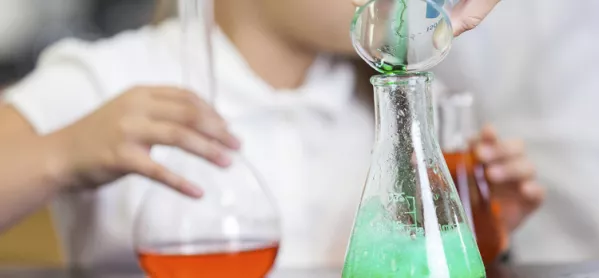- Home
- How to teach a practical subject on a limited budget
How to teach a practical subject on a limited budget

Ask anyone over the age of about 14 what they think of when you mention science to them, and most will tell you that images of Bunsen burners and glassware immediately spring to their minds. Although this vision of science is typical of many secondary schools, this is generally not a feasible option for many primary or special schools around the country; from both a classroom or budgetary viewpoint.
The budgetary constraints for practical science have been recognised from as far back as 2008 when SCORE (Science Community Representing Education), a collaboration of leading science organisations, revealed concerns about the provision of resources for practical work in schools. This situation has not improved in the intervening 10 years, with further research showing that state-funded schools and sixth form colleges have well below the budget that SCORE identified as being essential to teach science subjects. The situation is worse in primary schools, with teachers having access to less than half of the materials required to teach practical science.
Although there is no easy solution to the provision of high quality essential equipment in schools; there are nonetheless, viable alternatives in many cases which can easily deliver a fully interactive, exciting and inspiring science curriculum in many different educational settings. In fact, this year the charity SHINE, via their Let Teachers SHINE competition, has awarded a grant to the Leicester Children’s Hospital School to assist with the development of a practical science in hospital schools through the ‘Science by the Bedside’ project; the aim of which is to provide stimulating, low cost, practical science to in-patients at the school, rather than through textbooks and worksheets.
The traditional ‘chalk and talk’ method is not an effective means to either teach or learn science, it does not develop the many areas of learning including critical analysis, induction, deduction, organisation and creative problem-solving skills that science has been shown to improve. Over 95 per cent of primary school teachers are estimated to be non-scientists and science is an infamously difficult subject to teach well without secure subject knowledge. Science is most effectively learnt when students have the opportunity to work ‘practically’, on a regular basis through their time at school. However, the common misconception is, therefore, that there must be an expensive activity in order to provide a quality experience.
Science on a shoestring
There are a few easy steps that any teacher can take if they are wanting to introduce stimulating science into their classroom. The first and most important step if you are unsure about the whole topic of science, and the thought of teaching it fills you with dread, (much like teaching art does to most science teachers), is to find a local science teacher from a secondary school or college who is willing to spend a little time with you going over the basic concepts which you would like to cover. Most scientists love nothing more than going back to basics and designing activities, so this shouldn’t be too much of an issue.
Then find a topic, be it weather, space, life cycles or forces. There are many fantastic websites with brilliant ideas for cross-curricular practical science lessons. Combine science with art, literacy, maths or DT and suddenly it becomes less daunting.
Next, resources. Stop thinking of expensive glassware and Bunsen burners, and instead look through your recycling bin and cupboards. It is amazing how empty jars, bottles, old CDs, cardboard tubes and other things which would normally be thrown away can be turned into a fascinating and fun learning experience; other inexpensive supermarket items such as paint, paper plates, tape and food colouring can also be added to the mix.
Finally, introduce your students to your ideas. You will be astounded how many ways one Year 3 class can find to launch a marshmallow using lollipop sticks, elastic bands, glue, card, imagination and problem-solving skills. Children are the greatest scientists and researchers that we have. Let’s give them the opportunity to learn, experiment and discover - even on a budget.
Who knows, you may have the next Professor Stephen Hawking sitting in your classroom right now!
Dr Elizabeth Hope is the lead teacher in Science at Leicester Children’s Hospital School @HospitalSchoolL. If you have a great idea like Science at the Bedside, apply for Let Teachers SHINE funding today. SHINE’s Let Teachers SHINE competition will open again for next year’s applications in February 2019.To find out more about the innovative projects they fund visit www.shinetrust.org.uk/lts2018
Keep reading for just £1 per month
You've reached your limit of free articles this month. Subscribe for £1 per month for three months and get:
- Unlimited access to all Tes magazine content
- Exclusive subscriber-only stories
- Award-winning email newsletters
